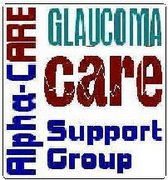Here are some photos of the 11 participants at this discussion session . A Summary of the discussion will be appended to this posting soon. We specially welcome Peggy, Dr Sharon Siddique's mother, who came from Vail, Boulder, USA and she is in Singapore for a one-month family visit.





Alpha-C Sharing Session - 3 February 2007
.
For this Sharing Session a 15min video was screened from the internet a talk on “Discussion on Glaucoma” by Leila Rafla-Demetrious, MD, Assistant Professor of Ophthalmology at Cornell University, NY
.
The video summarizes the results of Ocular Hypertension Treatment Study (OHTS) and the Early Manifest Glaucoma Trial (EMGT) and explains how these studies impact the management of glaucoma..
-
--ooOOoo--
.
As a follow up from the video we discussed and shared how these studies and practices relate to our own personal experiences
The two studies address 2 seperate concerns. Both studies focus on lowering IOP as the vehicle for slowing down the disease progression.
1. OHTS - people with ocular hypertension: what are the chances that they develop POAG and will medication slow-down or prevent the disease.
2. EMGT - people with early manifest glaucoma: will medication prevent or slow-down the progression of the disease.
.
The Ocular Hypertension Treatment Study (OHTS)
Two Groups were studied for period of 5 years: one without medication(Observation Group) and a medication group. Note that the sample population selected had not developed POAG but exhibited high IOP. This is a very large study carried at multi-centers throughout America.
Selection of population study on basis of ages between 40 and 80 with IOP greater than or equal to 24 mm Hg but less than or equal to 32 mm Hg in at least one eye and IOP greater than or equal to 21 but less than or equal to 32 mm Hg in the fellow eye,
Study closed in June 1996.
Result of Study:
At end of 5 years, the study concluded the cumulative probability of developing POAG was 4.4 percent in the medication group and 9.5 percent in the observation group. There was little evidence of increased systemic or ocular risk associated with ocular hypotensive medication.
The study was able to highlight to doctors reasonable estimates of risk for individual ocular hypertensive patients and to determine which ocular hypertensive individuals are most likely to benefit from early prophylactic (preventive) medical treatment.
Baseline factors that predicted POAG included older age, larger vertical or hotrizontal cup-disc ratio, higher intraocular pressure, greater pattern standard deviation, and thinner central corneal measurement.
.
Early Manifest Glaucoma Trial (EMGT)
The study concluded in 2002 -- called the Early Manifest Glaucoma Trial conducted in Sweden-- followed 255 patients, aged 50-80 years, with early stage glaucoma in at least one eye. Most patients were identified in a population screening. The average age of the patients at the beginning of the study was 68 years. One group was treated immediately with medicines and laser to lower eye pressure, and the other group -- the control group -- was left untreated. Both groups were followed carefully and monitored every three months for early signs of advancing disease, using indicators that are extremely sensitive for detecting glaucoma progression. Any patient in the control group whose glaucoma progressed was immediately offered treatment.
After six years of follow-up, scientists found that progression was less frequent in the treated group (45 percent) than in the control group (62 percent), and occurred significantly later in treated patients. Treatment effects were also evident in patients with different characteristics, such as age, initial eye pressure levels, and degree of glaucoma damage. In the treated group, eye pressure was lowered by an average of 25 percent.
The findings from this study reinforce the known evidence that lowering eye pressure in glaucoma's early stages slows progression of the disease. It suggests that early detection and treatment will slow the disease progression.
.
--ooOOoo--
.
Read also the Chat Highlights on OHTS from Wills Glaucoma Service at
.
--ooOOoo--
What has our Health Ministry got to say about the 2 clinical trials:
IOP goals in specific groups of glaucoma patients
Recent large prospective randomised clinical trials conducted in the
US have provided some benchmarks that should guide the clinician
when managing specific categories of glaucoma patients.
It is recommended that glaucoma therapy in the local context should
be informed by, but not unduly constrained by, or indiscriminately
adherent to, the following trials:
- 1. The Collaborative Normal Tension Glaucoma Study (CNTGS)
2. The Advanced Glaucoma Intervention Study (AGIS)
3. The Collaborative Initial Glaucoma Treatment Study (CIGTS)
4. The Early Manifest Glaucoma Trial (EMGT)
5. The Ocular Hypertension Treatment Study (OHTS)
Source: MOH Clinical Practice Guidelines on Glaucoma - Ministry of Health : Singapore

















